"Beethoven's Five Secrets - One Republic"
Nombre total de pages vues
20/09/2018
Stars and Dust in Corona Australis - Astronomy picture of the day - 2018 September 20
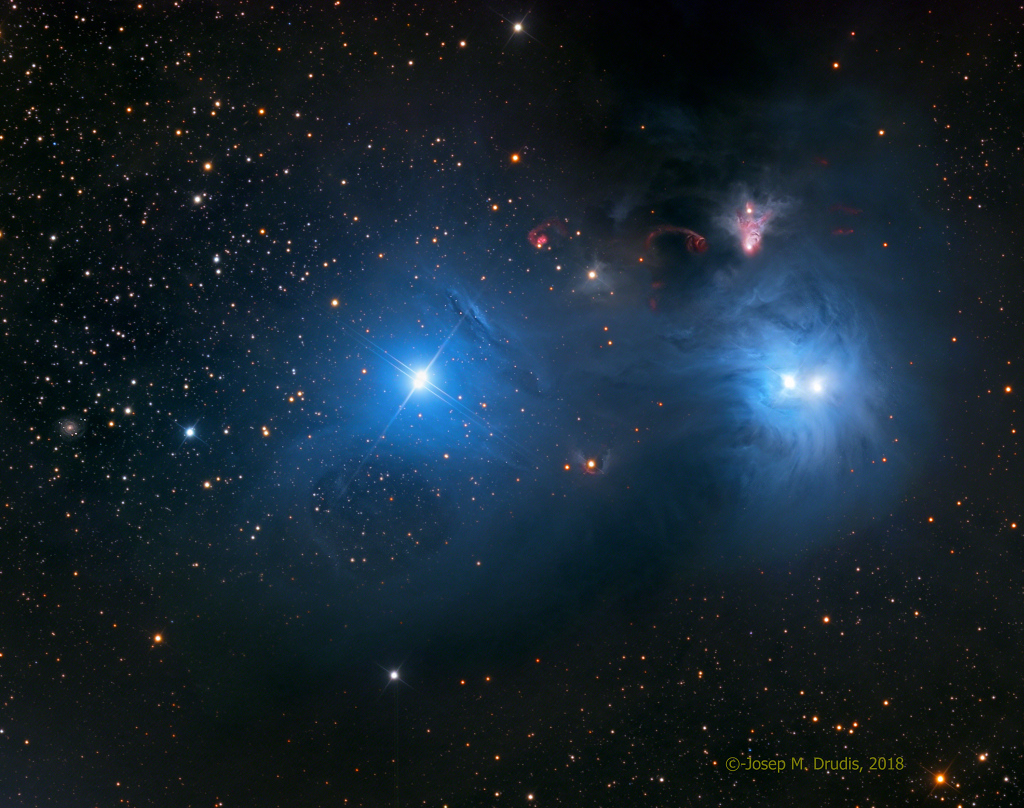
Image Credit & Copyright: Josep Drudis
Explanation: Cosmic dust clouds and young, energetic stars inhabit this telescopic vista, less than 500 light-years away toward the northern boundary of Corona Australis, the Southern Crown. The dust clouds effectively block lightfrom more distant background stars in the Milky Way. But the striking complex of reflection nebulae cataloged as NGC 6726, 6727, and IC 4812 produce a characteristic color as blue light from the region's young, hot stars isreflected by the cosmic dust. The dust also obscures from view stars still in the process of formation. At top right, smaller yellowish nebula NGC 6729 bends around young variable star R Coronae Australis. Near it, glowing arcs and loops shocked by outflows from embedded newborn stars are identified as Herbig-Haro objects. On the sky this field of view spans about 1 degree. That corresponds to almost 9 light-years at the estimated distance of the nearby star forming region.
19/09/2018
Cocoon Nebula Deep Field - Astronomy picture of the day - 2018 September 19
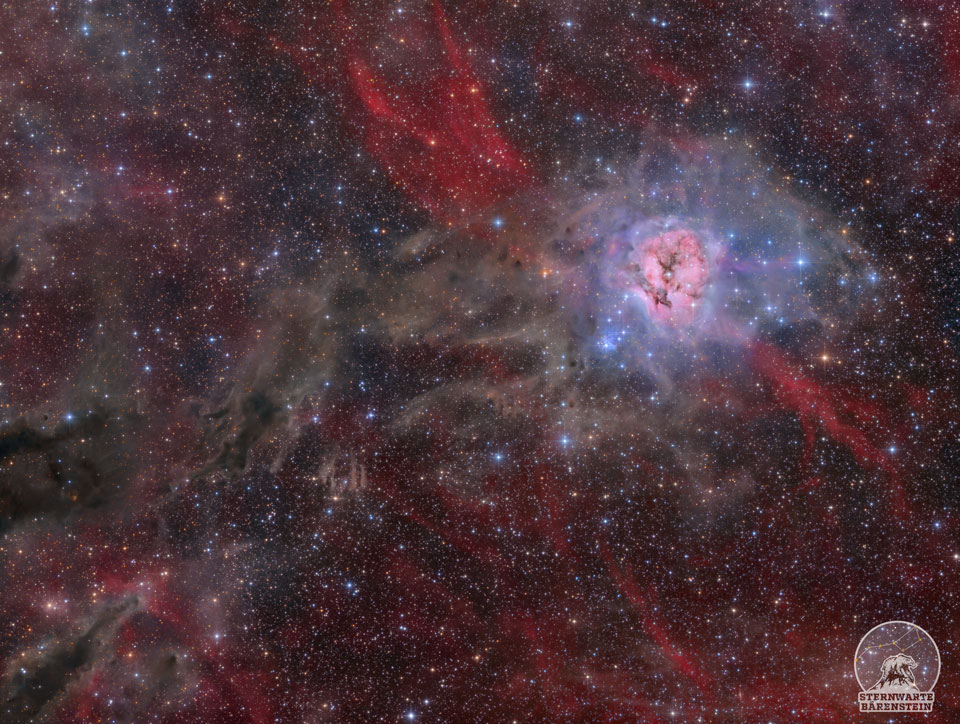
Image Credit & Copyright: Marcel Drechsler (Baerenstein Obs.)
Explanation: Inside the Cocoon Nebula is a newly developing cluster of stars. The cosmic Cocoon on the upper right also punctuates a long trail of obscuring interstellar dust clouds to its left. Cataloged as IC 5146, the beautiful nebula is nearly 15 light-years wide, located some 3,300 light years away toward the northern constellation of the Swan (Cygnus). Like other star forming regions, it stands out in red, glowing, hydrogen gas excited by young, hot stars and blue, dust-reflected starlight at the edge of a nearly invisible molecular cloud. In fact, the bright star near the center of this nebula is likely only a few hundred thousand years old, powering the nebular glow as it slowly clears out a cavity in the molecular cloud's star forming dust and gas. This exceptionally deep color view of the Cocoon Nebula traces tantalizing features within and surrounding the dusty stellar nursery.
17/09/2018
Cosmic Collision Forges Galactic Ring - Astronomy picture of the day - 2018 September 17
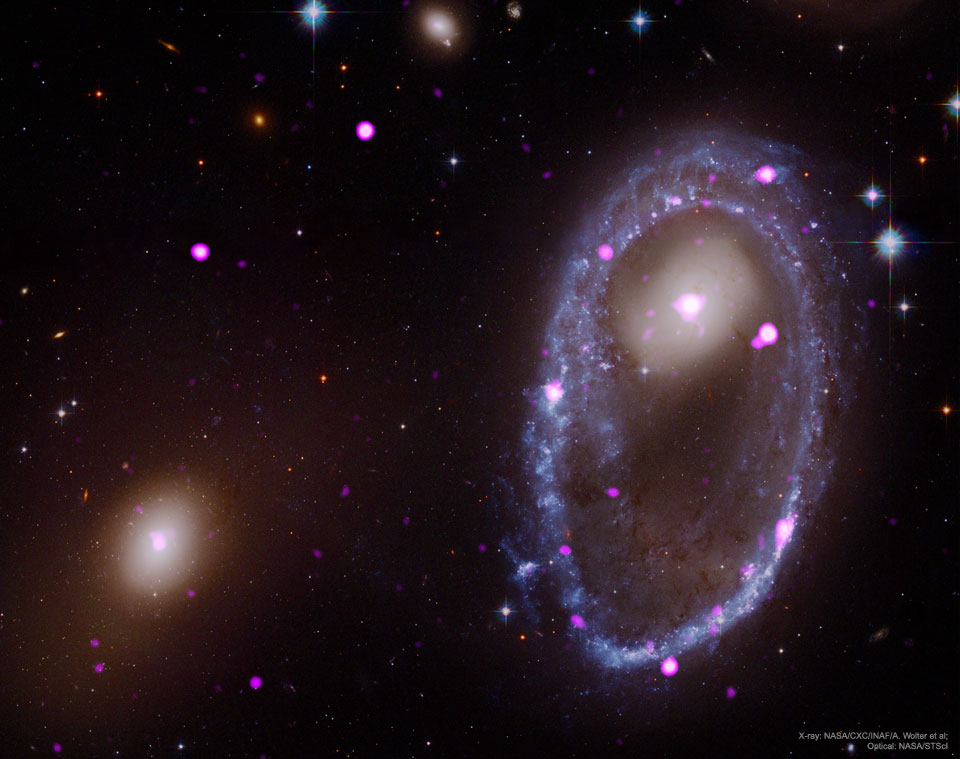
16/09/2018
A Solar Filament Erupts - Astronomy picture of the day - 2018 September 16
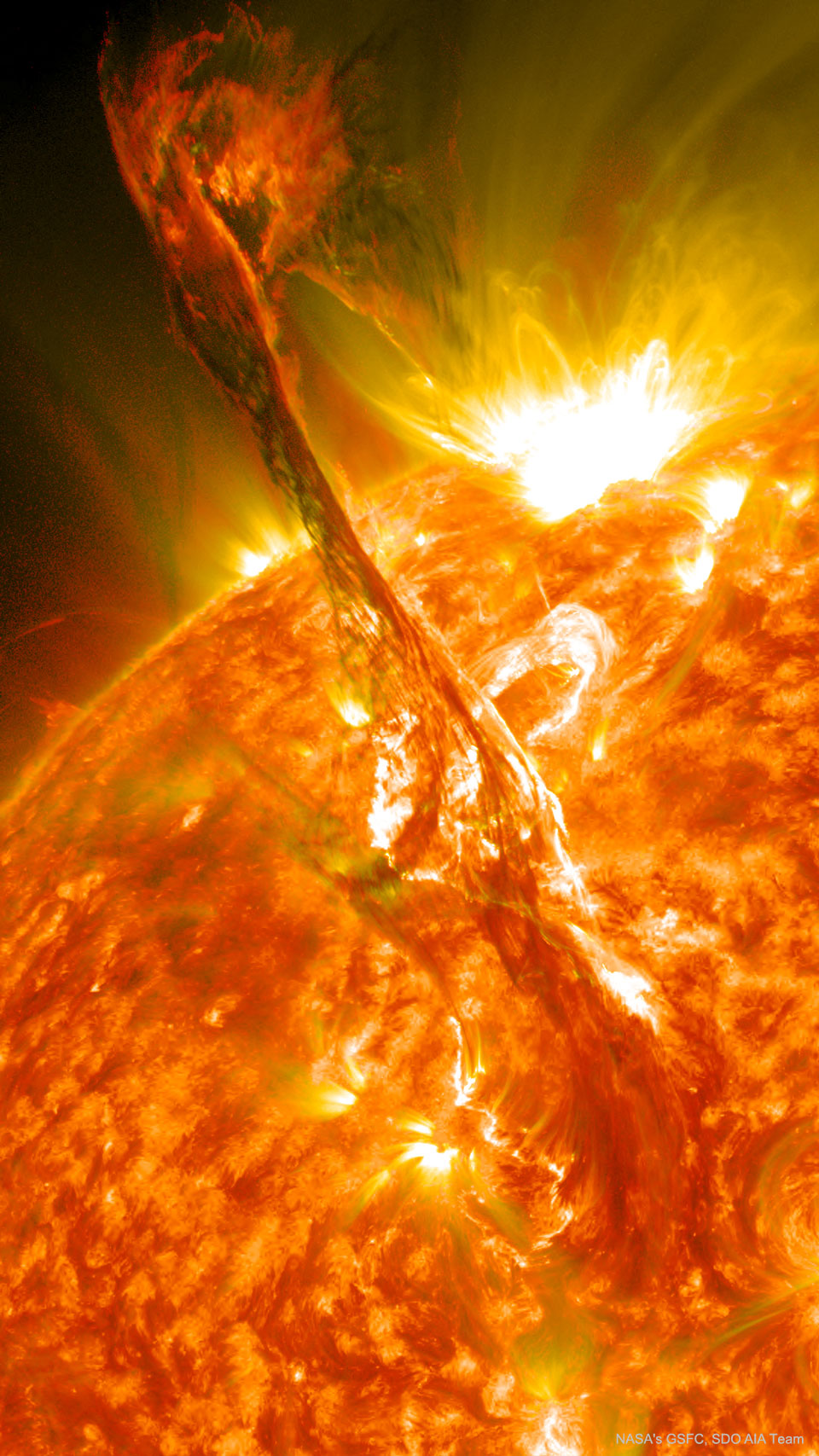
Image Credit: NASA's GSFC, SDO AIA Team
Explanation: What's happened to our Sun? Nothing very unusual -- it just threw a filament. Toward the middle of 2012, a long standing solar filament suddenly erupted into space producing an energetic Coronal Mass Ejection (CME). The filament had been held up for days by the Sun's ever changing magnetic field and the timing of the eruption was unexpected. Watched closely by the Sun-orbiting Solar Dynamics Observatory, the resulting explosion shotelectrons and ions into the Solar System, some of which arrived at Earth three days later and impacted Earth's magnetosphere, causing visible aurorae. Loops of plasma surrounding an active region can be seen above the erupting filament in the featured ultraviolet image. Although the Sun is now in a relatively inactive state of its 11-year cycle, unexpected holes have opened in the Sun's corona allowing an excess of charged particles to stream into space. As before, these charged particles are creating auroras.
15/09/2018
Mont Blanc, Meteor, and Milky Way - Astronomy picture of the day - 2018 September 15
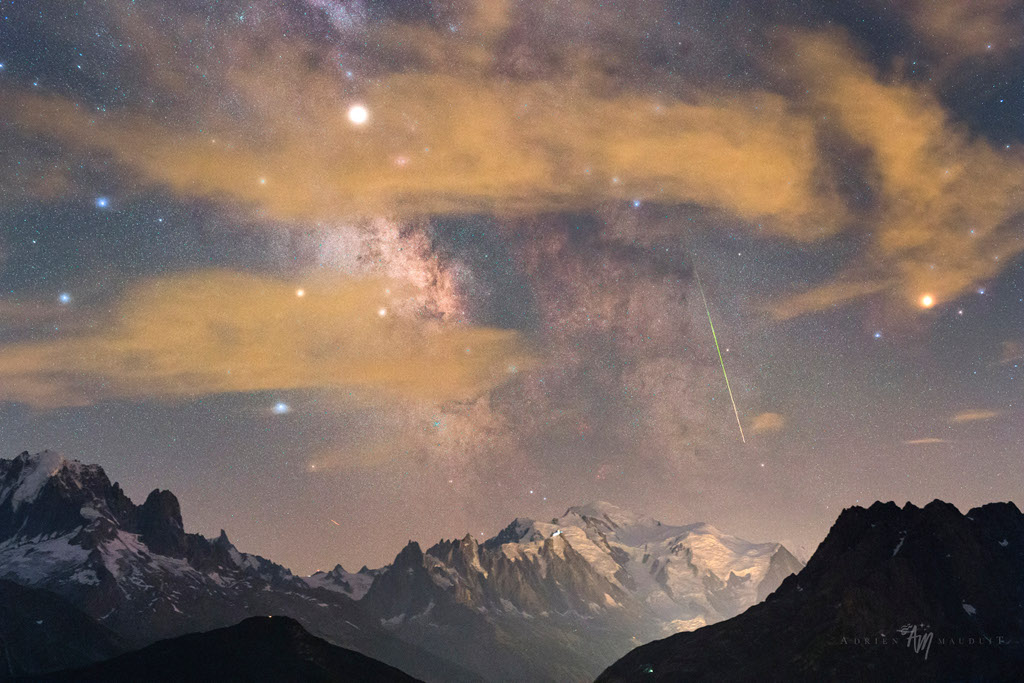
Image Credit & Copyright: Adrien Mauduit
Explanation: Snowy Mont Blanc is near the center of this atmospheric night skyscape. But high, thin clouds fogged the skies at the photographer's location, looking south toward Europe's highest peak from the southern Swiss Alps. Still, the 13 second exposure finds the faint star fields and dark rifts of the Milky Way above the famous white mountain. Bloated by the mist, bright planet Saturn and Antares (right), alpha star of Scorpius, shine through the clouds to flank the galaxy's central bulge. The high-altitude scene is from the rewarding night of August 12/13, so it also includes the green trail of a Perseid meteor shooting along the galactic plane.
14/09/2018
Ice Halos at Yellowknife - Astronomy picture of the day - 2018 September 14
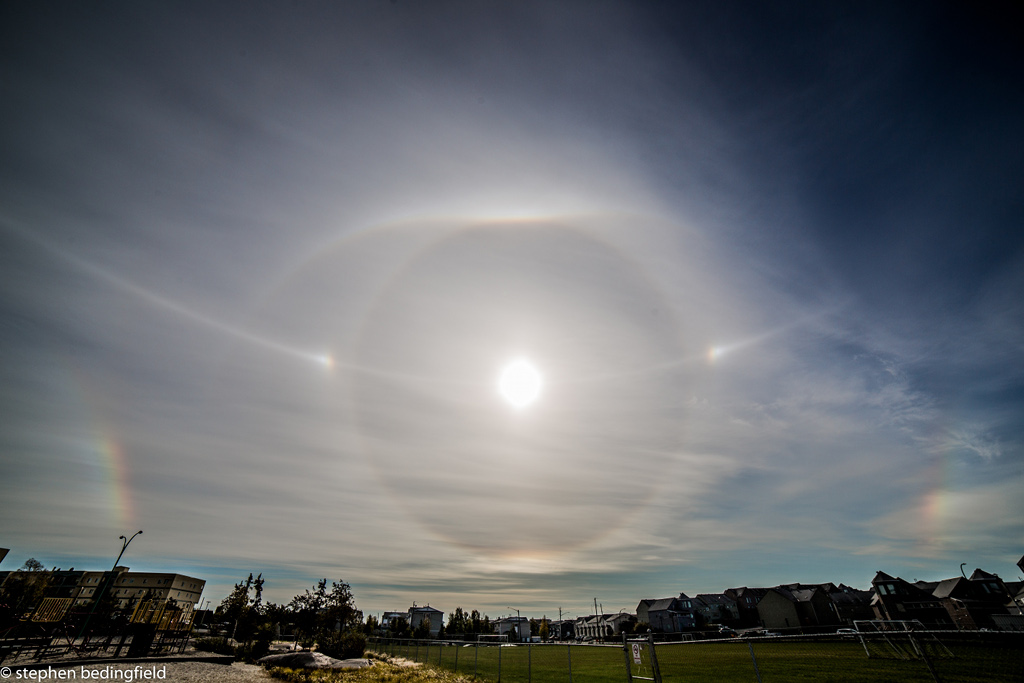
Image Credit & Copyright: Stephen Bedingfield
Explanation: You've probably seen a circle around the Sun before. More common than rainbows, ice halos, like a 22 degree circular halo for example, can be easy to spot, especially if you can shade your eyes from direct sunlight. Still it's rare to see such a diverse range of ice halos, including sundogs, tangent, infralateral, and Parry arcs, all found in this snapshot from planet Earth. The picture was quickly taken in the late morning of September 4 from Yellowknife, Northwest Territories, Canada. The beautiful patterns are generated as sunlight (or moonlight) is reflected and refracted in six-sided water ice crystals in Earth's atmosphere. Of course, atmospheric ice halos in the skies ofother worlds are likely to be different.
13/09/2018
Real Time Perseid - Astronomy picture of the day - 2018 September 13
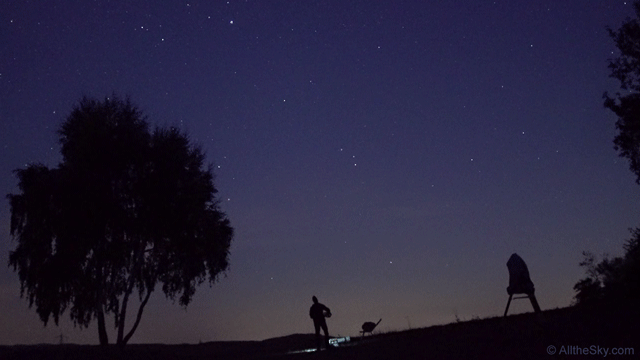
Video Credit & Copyright: Till Credner, AlltheSky.com
Explanation: Bright meteors and dark night skies made this year's Perseid meteor shower a great time for a weekend campout. And while packing away their equipment, skygazers at a campsite in the mountains of southern Germany found at least one more reason to linger under the stars, witnessing this brief but colorful flash with their own eyes. Presented as a 50 frame gif, the two second long video was captured during the morning twilight of August 12. In real time it shows the development of the typical green train of a bright Perseid meteor. A much fainter Perseid is just visible farther to the right. Plowing through Earth's atmosphere at 60 kilometers per second, Perseids are fast enough to excite the characteristic green emission of atomic oxygen at altitudes of 100 kilometers or so.
12/09/2018
Lunations - Astronmy picture of the day - 2018 September 12
Video Credit: Data: Lunar Reconnaissance Orbiter ; Animation: NASA's Scientific Visualization Studio;
Music: The Blue Danube (Johann Strauss II)
Explanation: Our Moon's appearance changes nightly. As the Moon orbits the Earth, the half illuminated by the Sun first becomes increasingly visible, then decreasingly visible. The featured video animates images taken by NASA's Moon-orbiting Lunar Reconnaissance Orbiter to show all 12 lunations that appear this year, 2018. A single lunation describes one full cycle of our Moon, including all of its phases. A full lunation takes about 29.5 days, just under a month (moon-th). As each lunation progresses, sunlight reflects from the Moon at different angles, and so illuminates different features differently. During all of this, of course, the Moon always keeps the same face toward the Earth. What is less apparent night-to-night is that the Moon's apparent size changes slightly, and that a slight wobble called a libration occurs as the Moon progresses along its elliptical orbit.
Inscription à :
Commentaires (Atom)
ASTRONOMY - Unicorn, Fox Fur and Christmas Tree
2025 December 25 Unicorn, Fox Fur and Christmas Tree Image Credit & Copyright : Michael Kalika Explanation: A star forming region ...
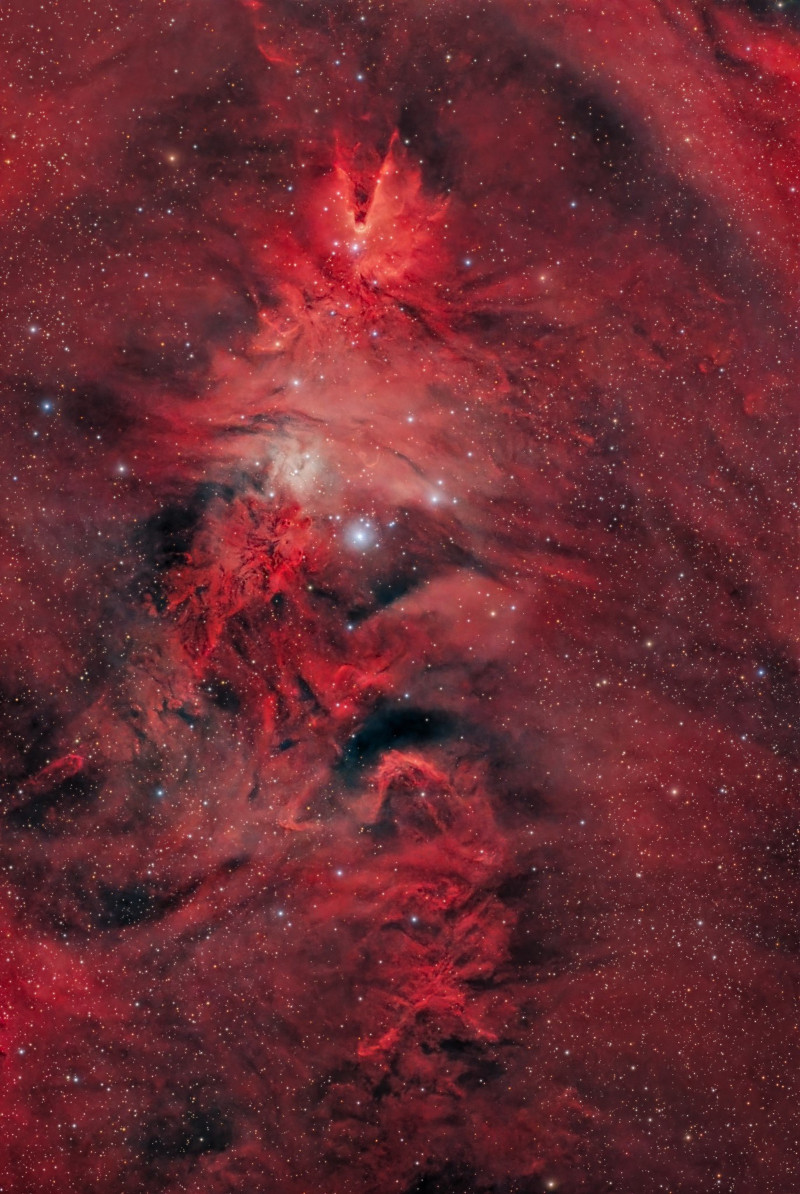
-
2022 September 26 All the Water on Planet Earth Illustration Credit: Jack Cook, Adam Nieman, Woods Hole Oceanographic Institution ; Data ...
-
2025 May 11 The Surface of Venus from Venera 14 Image Credit: Soviet Planetary Exploration Program , Venera 14 ; Processing & Copyri...